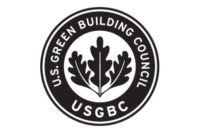When LEED v4 was approved in June of 2013, the USGBC boasted an 86 percent membership vote approval. An “overwhelming” number that practically had the USGBC dancing in the streets. Chrissy Macken, assistant project manager for LEED v4 at USGBC, said in a press release: “This is really phenomenal; it’s a great sentiment from our membership that we are moving in the right direction.”
But there were several members that cautioned the USGBC against putting LEED v4 out to ballot at all, because of the many problems identified with the proposed rating system during its development. These people, including some key USGBC members, voted “no” and were deeply concerned that the new version of LEED would be rubber stamped, as usual, by the unquestioning voting majority. USGBC Founding Chairman Rob Watson, a self-described “market transformation expert,” was part of the 10 percent that voted against LEED v4. Just after LEED v4 approval, he posted:
“I really hope that the very real technical and market issues that I believe USGBC has failed to address in v4 do not come back to bite us. I really hope I’m wrong in fearing that a v4 misstep on the heels of the 2009 functionality nightmare could winnow LEED down to a shadow of its former self.”
Watson’s concerns may be proven prophetic. Just one year after LEED v4 was released for use, the USGBC announced that it was delaying the requirement that all projects register under LEED v4, extending the use of LEED 2009 until June 2015 to “offer the green building industry additional time to prepare” for LEED v4. As that date rapidly approached, the USGBC was being hammered with complaints about LEED v4 and, upon conducting a survey of the membership in October of 2014, discovered that 61 percent of members were “not ready” or “unsure” if they were ready to pursue LEED v4. And so the USGBC was compelled to extend the requirement to use LEED v4 by an additional 18 months, to October of 2016. How is it that 86 percent of the membership voted overwhelmingly in favor of LEED v4 and just months later decided that they didn’t really like it that much after all? A commenter on a popular LEED forum discussion Web site provided perhaps the most accurate answer to this question with her post:
“I wonder what percentage of the 86 percent actually read the LEED v4 drafts before voting, because there are some pretty obvious HUGE underlying issues with the way LEED v4 is currently written (vagueness, unnecessary complexity, epic documentation requirements for no reason...).
No Easy Fix for LEED v4
The USGBC, it seems, has really stepped in it now and seems unable to figure out how to fix the many problems it has created with its rush in implementing LEED v4. The Band-Aid approach in ever-delaying its required adoption will only work for so long. In addition to dealing with an unhappy membership over LEED v4, the USGBC has also been dealing with at least five formal appeals to LEED v4 brought by various industry organizations—the same organizations that have been pleading with the USGBC for years to begin acting like the transparent, consensus-based rating body it has always claimed to be.
The issues raised in the appeals—the two I read—(I found one searching the internet and I asked for one from one of the appellants) are legitimate, and are forcing the USGBC to (finally?) take them seriously. As a direct result of one appeal, brought by the American Chemistry Council, the USGBC announced that it would begin working with the organization to resolve the issues raised.
There has been no word from the other four appellants about how the USGBC intends to respond to their appeals. The appeal from the wood industry, cosigned by nine wood industry organizations, associations, producers, and forest owners starts off:
“… [T]he USGBC adopted LEED v4 without resolving what President and CEO Rick Fedrizzi described as “the single most contentious issue in USGBC’s history.” Despite letters of opposition from 89 Members of Congress, 14 Governors, and thousands of other affected stakeholders, LEED v4 continues to award credit to one brand of certified forest products (FSC) to the exclusion of competing products from the certification systems most widely used in the U.S. (SFI and ATFS).”
The appeal goes on to describe how the USGBC has consistently failed to use recognized principles of due process and consensus standard development procedures, and in many cases has done the opposite of its own stated development processes. Reading the appeal brought back memories for me during my tenure on the LEED Materials and Resources Technical Advisory Group as we tried to come up with an alternative, performance-based wood credit. We did, in fact, do so but the appeal points out that the USGBC declined to implement the TAG’s recommendations, something that was incredibly frustrating to the TAG and the beginning of my deep disenchantment with the entire organization.
Another of the five appeals, brought by The Vinyl Institute, echoes much of the wood group’s criticisms that the USGBC has not followed a truly transparent, balanced, consensus-based process, resulting in a credit that leads to a “categorical deselection of vinyl building products.” The appellant points out, in great detail, that the USGBC has consistently engaged in a development process fundamentally lacking in due process. The appellant includes a long list of failures and points out that LEED v4 contradicts USGBC’s own scientific study which arrived at the conclusion that LEED should not introduce a materials-avoidance credit, for PVC or anything else, because this would lead, in many cases, to worse environmental and health alternatives.
Conclusion
The controversy surrounding LEED v4 is white hot. One wonders if LEED v4 will ever be adopted given the delays it has suffered and the multiple appeals that the USGBC must resolve to the appellants’ satisfaction. By the time LEED v4 is required to be used by the USGBC, at the current delayed date of October 2016, it will be more than 4 years old, and will have no history of use. Meanwhile, Green Globes, ASHRAE 189.1, the IgCC, and other green building rating systems are picking up steam and busy making continual improvements. As USGBC founding member Rob Watson worries in his online comments, perhaps this is the beginning of the end for LEED.






Report Abusive Comment